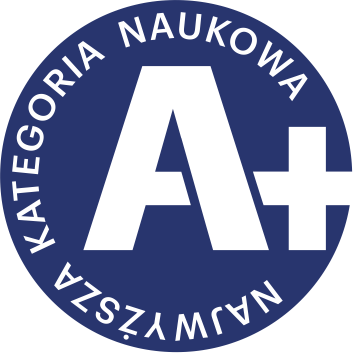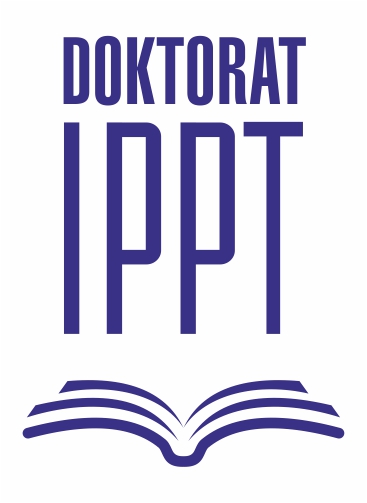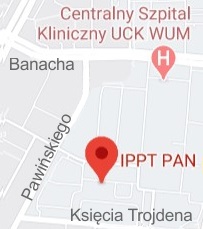| dr Anita Orłowska-Gałęzia |

|
|
Doktorat
| 2007-06-14 | Delaminacja wiotkich ustrojów sprężystych-modelowanie, identyfikacja, sterowanie
|
Ostatnie publikacje
| 1. |
Wiszowaty R., Graczykowski C., Mikułowski G., Holnicki-Szulc J., Wołejsza Z., Orłowska-Gałęzia A., Jankowski Ł., Multi-Objective Design of a Pneumatic Adaptive Impact Absorber,
ENGINEERING TRANSACTIONS (ROZPRAWY INŻYNIERSKIE), ISSN: 0867-888X, DOI: 10.24423/engtrans.3546.2025, pp.1-24, 2025 Streszczenie: Słowa kluczowe:
| 70p. | |||||||||||||||||||||||||
| 2. |
Orłowska-Gałęzia A. M., Graczykowski C., Pawłowski P. K., Ruta R.♦, Rimasauskas M.♦, Kuncius T.♦, Majewska K.♦, Mieloszyk M.♦, Characterization of thermal expansion in additively manufactured continuous carbon fibre reinforced polymer composites using fibre Bragg grating sensors,
MEASUREMENT, ISSN: 0263-2241, DOI: 10.1016/j.measurement.2024.114147, Vol.227, pp.114147-1-114147-15, 2024 Streszczenie: Słowa kluczowe:
| 200p. | |||||||||||||||||||||||||
| 3. |
Gałęzia A.♦, Orłowska-Gałęzia A., Application of Teager–Kaiser’s instantaneous frequency for detection of delamination in FRP composite materials,
Materials, ISSN: 1996-1944, DOI: 10.3390/ma14051154, Vol.14, No.5, pp.1154-1-24, 2021 Streszczenie: Słowa kluczowe:
| 140p. | |||||||||||||||||||||||||
| 4. |
Orłowska A., Gałęzia A.♦, Świercz A., Jankowski Ł., Mitigation of vibrations in sandwich-type structures by a controllable constrained layer,
JOURNAL OF VIBRATION AND CONTROL, ISSN: 1077-5463, DOI: 10.1177/1077546320946130, Vol.27, No.13-14, pp.1595-1605, 2021 Streszczenie: Słowa kluczowe:
| 70p. | |||||||||||||||||||||||||
| 5. |
Popławski B., Mikułowski G., Orłowska A., Jankowski Ł., On/off nodal reconfiguration for global structural control of smart 2D frames,
Journal of Applied and Computational Mechanics, ISSN: 2383-4536, DOI: 10.22055/jacm.2020.32454.2016, Vol.7, No.SI, pp.1121-1129, 2021 Streszczenie: Słowa kluczowe:
| 20p. | |||||||||||||||||||||||||
| 6. |
Orłowska A., Graczykowski C., Gałęzia A.♦, The effect of prestress force magnitude on the natural bending frequencies of the eccentrically prestressed glass fibre reinforced polymer composite beams,
Journal of Composite Materials, ISSN: 0021-9983, DOI: 10.1177/0021998317740202, Vol.52, No.15, pp.1-14, 2018 Streszczenie: Słowa kluczowe:
| 30p. | |||||||||||||||||||||||||
| 7. |
Graczykowski C., Orłowska A., Holnicki-Szulc J., Prestressed composite structures – Modeling, manufacturing, design,
COMPOSITE STRUCTURES, ISSN: 0263-8223, DOI: 10.1016/j.compstruct.2016.02.085, Vol.151, pp.172-182, 2016 Streszczenie: Słowa kluczowe:
| 35p. | |||||||||||||||||||||||||
| 8. |
Orłowska A., Kołakowski P., Holnicki-Szulc J., Detecting delamination zones in composites by embedded electrical grid and thermographic methods,
SMART MATERIALS AND STRUCTURES, ISSN: 0964-1726, DOI: 10.1088/0964-1726/20/10/105009, Vol.20, No.10, pp.105009-1-9, 2011 Streszczenie:
| 35p. | |||||||||||||||||||||||||
| 9. |
Mróz A.♦, Orłowska A., Holnicki-Szulc J., Semi-active damping of vibrations. Prestress Accumulation-Release strategy development,
SHOCK AND VIBRATION, ISSN: 1070-9622, DOI: 10.3233/SAV-2010-0502, Vol.17, pp.123-136, 2010 Streszczenie:
| 20p. | |||||||||||||||||||||||||
| 10. |
Orłowska A., Kołakowski P., Holnicki-Szulc J., Modelling and identification of delamination in double-layer beams by the virtual distortion method,
COMPUTERS AND STRUCTURES, ISSN: 0045-7949, DOI: 10.1016/j.compstruc.2008.05.008, Vol.86, pp.2203-2214, 2008 Streszczenie: Słowa kluczowe:
|
Lista rozdziałów w ostatnich monografiach
|
1. |
Kołakowski P., Mróz A.♦, Orłowska A., Pawłowski P., Sala D.♦, Sekuła K.♦, Świercz A., Wiącek D., Wójcicki P., Monitorowanie obciążeń i stanu technicznego konstrukcji mostowych, rozdział: System monitorowania stalowego mostu kolejowego, IPPT Reports on Fundamental Technological Research, pp.85-108, 2014 | |
|
2. |
Graczykowski C., Knor G., Kołakowski P., Mikułowski G., Orłowska A., Pawłowski P., Skłodowski M.♦, Świercz A., Wiszowaty R., Zieliński T.G., Monitorowanie obciążeń i stanu technicznego konstrukcji mostowych, rozdział: Wybrane zagadnienia monitorowania, IPPT Reports on Fundamental Technological Research, pp.189-236, 2014 | |
|
3. |
Mróz A.♦, Orłowska A., Holnicki-Szulc J., Smart technologies for safety engineering, rozdział: Adaptive damping of vibration by the prestress accumulation/release strategy, Wiley, Holnicki-Szulc J. (Ed.), pp.251-267, 2008 | |
|
4. |
Kołakowski P., Świercz A., Orłowska A., Kokot M.♦, Holnicki-Szulc J., Smart technologies for safety engineering, rozdział: VDM-Based health monitoring of engineering systems, Wiley, Holnicki-Szulc J. (Ed.), pp.37-103, 2008 |
Prace konferencyjne
| 1. | Mieloszyk M.♦, Majewska K.♦, Andrearczyk A.♦, Rimasauskiene R.♦, Rimasauskas M.♦, Orlowska A., The thermal inuence on additive manufactured composite with fiber Bragg grating sensor, HMSBS XVI, SPIE Health Monitoring of Structural and Biological Systems XVI, 2022-04-04/04-10, SPIE Health Monitoring of Structural and Biological Systems XVI (US), DOI: 10.1117/12.2612517, pp.1, 2022 | |||||||||||
| 2. |
Orłowska A., Graczykowski C., Gałęzia A.♦, Numerical and experimental investigation of prestress effect on natural frequencies of composite beams,
ISMA 2018 / USD 2018, International Conference on Noise and Vibration Engineering / International Conference on Uncertainty in Structural Dynamics, 2018-09-17/09-19, Leuven (BE), pp.2239-2248, 2018 Streszczenie:
| 20p. | ||||||||||
| 3. |
Graczykowski C., Orłowska A., Venkat R.S.♦, The concept of smart prestressed composites. Numerical modelling and experimental evaluation,
SMART2013, 6th ECCOMAS Thematic Conference on Smart Structures and Materials, 2013-09-03/09-06, Turyn (IT), pp.1-22, 2013 Streszczenie: Słowa kluczowe:
|
Abstrakty konferencyjne
| 1. | Orłowska-Gałęzia A., Graczykowski C., Pawłowski P., Analytical and numerical modelling of thermo-mechanical behaviour of additively manufactured Continuous Carbon Fibre Reinforced Polylactide (CCFRP), ICNSC2023, INTERNATIONAL CONFERENCE ON NONLINEAR SCIENCE AND COMPLEXITY, 2023-06-10/06-15, Stambuł (TR), pp.1-1, 2023 | |||||||||||||||||||||||||||||||||||||
| 2. |
Pawłowski P., Orłowska-Gałęzia A., Graczykowski C., Mieloszyk M.♦, Embedded FBG Sensors in Additively Manufactured Polylactide Composites Reinforced with Continuous Fibers,
COMPOSITES 2023, 9th ECCOMAS Thematic Conference on the Mechanical Response of Composites: COMPOSITES 2023, 2023-09-12/09-14, Trapani (IT), pp.1-1, 2023 Streszczenie:
| |||||||||||||||||||||||||||||||||||||
| 3. | Orlowska-Galezia A., Graczykowski C., Pawłowski P., Mieloszyk M.♦, Majewska K.♦, Andrearczyk A.♦, Rimasauskiene R.♦, Rimasauskas M.♦, The use of Bragg fiber gratings for monitoring of thermal strain in additively manufactured continuous carbon fiber reinforced PLA, MS 2022, 1st International Conference on Mechanics of Solids, 2022-11-03/11-04, Porto (PT), pp.112, 2022 | |||||||||||||||||||||||||||||||||||||
| 4. | Orłowska-Gałęzia A., Knap L.♦, Holnicki-Szulc J., Semi-active interface (SAI) technique for suppressing of impact born vibrations, EACS 2022, 7th European Conference on Structural Control, 2022-07-10/07-13, Warszawa (PL), pp.50, 2022 | |||||||||||||||||||||||||||||||||||||
| 5. |
Jankowski Ł., Popławski B., Ostrowski M., Jedlińska A., Mikułowski G., Błachowski B., Pisarski D., Wiszowaty R., Mróz A., Orłowska A., Hou J.♦, Holnicki-Szulc J., Semi-active mitigation of free and forced vibrations by means of truss-frame nodes,
CMM-SolMech 2022, 24th International Conference on Computer Methods in Mechanics; 42nd Solid Mechanics Conference, 2022-09-05/09-08, Świnoujście (PL), pp.1-2, 2022 Streszczenie:
| |||||||||||||||||||||||||||||||||||||
| 6. |
Graczykowski C., Orłowska A., Modelling and design procedure of prestressed composite materials,
MECHCOMP3, 3rd International Conference on Mechanics of Composites, 2017-07-04/07-07, Bologna (IT), pp.346-154-154, 2017 Streszczenie:
| |||||||||||||||||||||||||||||||||||||
| 7. |
Orłowska A., Graczykowski C., Gałęzia A.♦, Manufacturing and properties of pre-stressed GFRP composites,
MECHCOMP3, 3rd International Conference on Mechanics of Composites, 2017-07-04/07-07, Bologna (IT), pp.329-48-48, 2017 Streszczenie:
|
Patenty
|
Numer/data zgłoszenia patentowego Ogłoszenie o zgłoszeniu patentowym |
Twórcy Tytuł Kraj i Nazwa uprawnionego z patentu |
Numer patentu Ogłoszenie o udzieleniu patentu |
|
|---|---|---|---|
|
391633 2010-06-26 BUP 1/2012 2012-01-02 |
Orłowska-Gałęzia A. M., Kołakowski P. D.♦, Holnicki-Szulc J. K. Sposób wykrywania pęknięć i rozwarstwień w elementach konstrukcji i układ elektryczny do wykrywania pęknięć i rozwarstwień w elementach konstrukcji PL, Adaptronica sp. z o.o. |
219986 WUP 8/2015 2015-08-31 |
|
|
387685 2009-04-02 BUP 21/2010 2010-10-11 |
Orłowska-Gałęzia A. M., Kołakowski P. D.♦, Holnicki-Szulc J. K. Sposób wykrywania delaminacji struktur kompozytowych i układ do wykrywania delaminacji struktur kompozytowych PL, Adaptronica sp. z o.o., Contec A. Holnicki W. Szała sp. j. |
214723 WUP 9/2013 2013-09-30 |
|
















